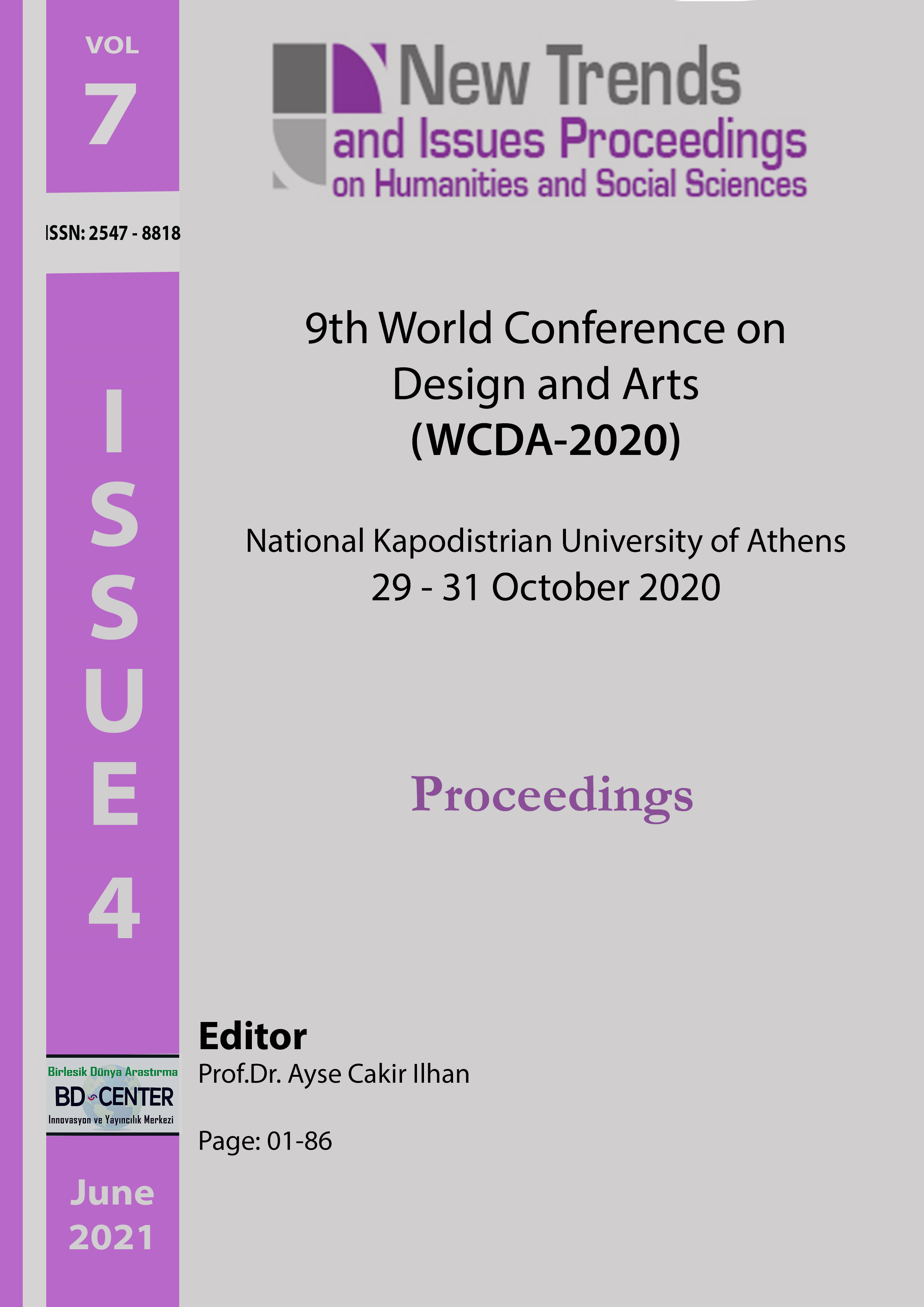The object of art, which exists ‘presently’: Performance art
Main Article Content
Abstract
The break between object and image was added to the perception of reality and truth which changed with the Internet, social networks and the like in the 1990s. The possibilities that technology provides completed the effort of the postmodernist discourse in art to destroy tradition. All values are being reconstructed. While art is rapidly being digitised, Performance Art has taken its places in art’s agenda. In this article, performance art will be elaborated and analysed with a focus on ceramic art. Performance art is the life itself, it is not repetitive, and it is what happens presently. It communes with the audience. As the object of art that exists at the moment, it cannot be bought, sold or moved. It is a way of transmitting the artist’s ideas in an unusual, striking and unmediated way that is different from the traditional art forms. In the performances, it is mostly seen that breaking traditional forms, using the clay in raw form rather than firing it, reflecting the plasticity of the clay and revitalising it are used as assets. Performance art is a model of rebellion against the era in which we are imprisoned in mass communication and distanced from reality under the image bombardment. It is necessary to see the performance art as an experiment or suggestion, as the object of art which exists presently, rather than as a show to meet expectations.
Keywords: Present time, art, performance art, ceramics, process, audience.
Downloads
Article Details

This work is licensed under a Creative Commons Attribution 4.0 International License.
Authors who publish with this journal agree to the following terms:- Authors retain copyright and grant the journal right of first publication with the work simultaneously licensed under a Creative Commons Attribution License that allows others to share the work with an acknowledgement of the work's authorship and initial publication in this journal.
- Authors are able to enter into separate, additional contractual arrangements for the non-exclusive distribution of the journal's published version of the work (e.g., post it to an institutional repository or publish it in a book), with an acknowledgement of its initial publication in this journal.
- Authors are permitted and encouraged to post their work online (e.g., in institutional repositories or on their website) prior to and during the submission process, as it can lead to productive exchanges, as well as earlier and greater citation of published work (See The Effect of Open Access).
